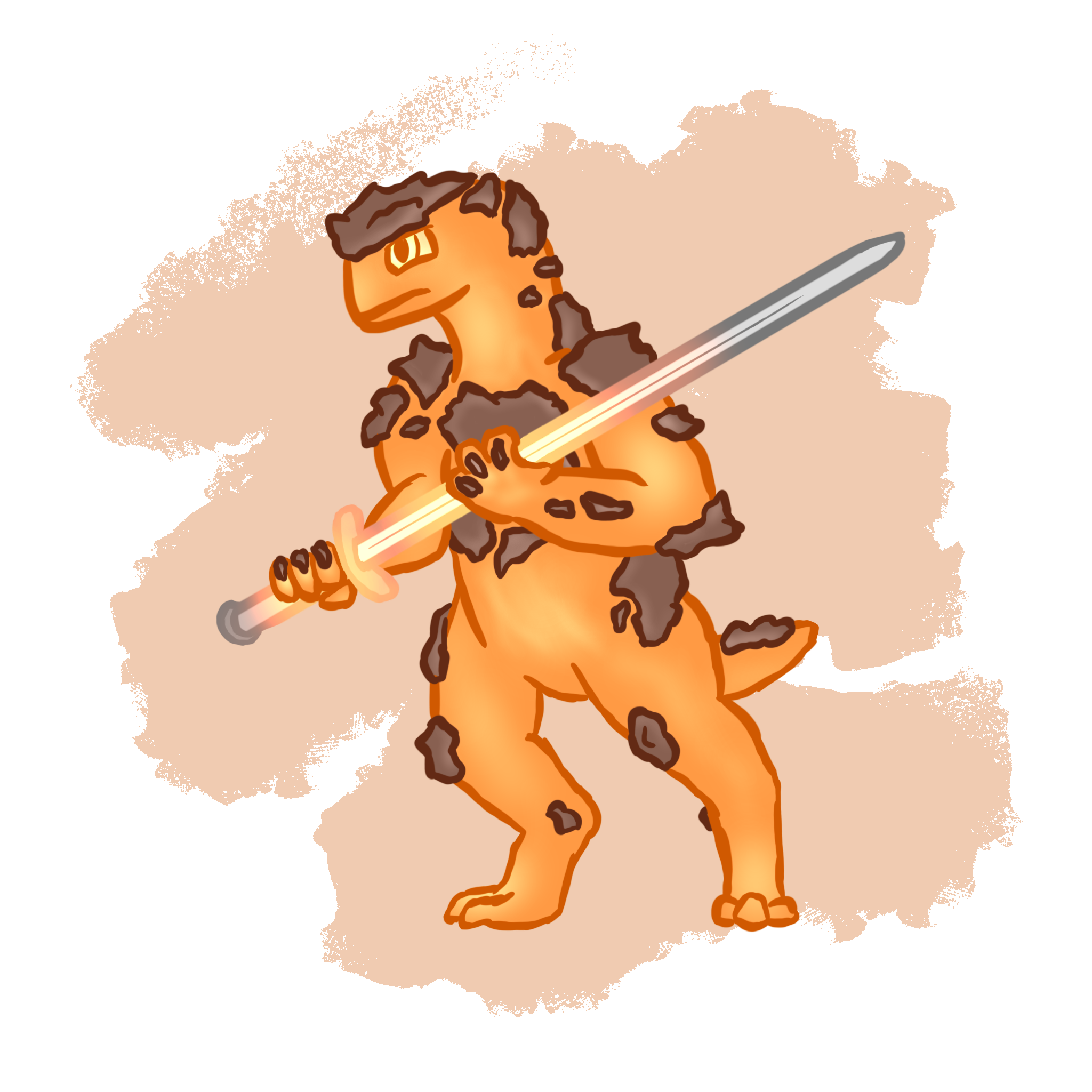Salamander

Born of elemental magma, Salamanders awoke in volcanic pits of Gabroria about a century ago and have remained there since. Cinder dwarf sulfur miners discovered the first primitive Salamander "town" in 105 SK. Four more were found since then across a total of three volcanos, with the last town being found in 154 SK.
The cinder dwarves now employ Salamanders in exchange for information and material goods. With the dwarves' guidance, Salamanders have constructed proper citadels in their original pits. Some now travel the world.
Young Race, Young People
Without anything resembling traditions or a history, Salamander culture is virtually nonexistant. Most Salamanders live their lives in a state of perpetual shock at being alive at all. This bewilderment wears off very slowly over time; only the oldest Salamanders have much personality at all.
Physical Appearance
Salamanders resemble a cross between a newt and a turtle, if that cross were made of lava. Dark volcanic rock covers a Salamander's back, including down to the tip of their tail and to the top of their head. Islands of rock jut out from other parts of the body, especially near joints. The limbs, head, and tail are otherwise smooth, glowing lava.
Game Mechanics
Abilities
Gradual Awakening. Salamanders start their lives all but mindless. Their personalities develop slowly; many salamanders have a low Charisma score for decades.
Elemental Endurance. The supernatural physiology of salamanders is associated with a very high average Constitution score, and to a lesser extend, a high average Strength score.
Perpetually Cold. Some salamanders burn hot enough to maintain fine motor skills, but most do not and thus have a low Dexterity score.
Alignment
Young Salamanders are neutral as can be. As their personality develops, their alignment may crystallize to anything, but usually ends up more lawful and good than chaotic or evil.
Age
If Salamanders do age, none have lived long enough to find out. They are generally considered mature at age 50 when their personality is mostly figured out, but there are no physical changes whatsoever. <redacted>
Speed
Your base walking speed depends on the ambient temperature. It is 20 feet below 0°F, 30 feet above 100°F, and 25 feet in between.
Salamander
Size
Medium or SmallSpeeds
Walk 25 ft. (20 ft. below 0°F; 30 ft. above 100°F)Old Age Threshold
?Traits
Water Susceptability. When you are doused in at least 1 gallon of water (or acid), you take 1d4 cold damage and some of the water boils away. This damage ignores resistance and immunity. Once you take this damage, you can't take it again until the start of your next turn.
Magmatic Glow. You shed bright light in a 5-foot radius and dim light for an additional 5 feet.
Superheated Body. When a creature comes into direct contact with your body, it takes 1d4 fire damage. It can't take this damage again until the start of your next turn. Additionally, you ignite any flammable object you touch for more than 6 seconds.
Elemental Nature. You don't need to eat, drink, breathe, or sleep.